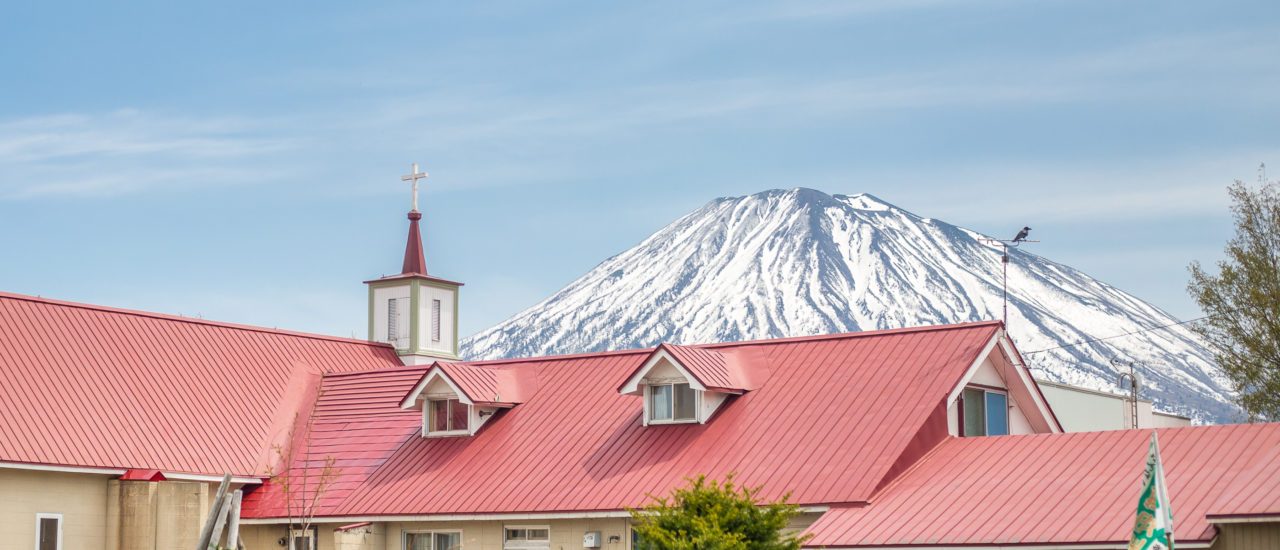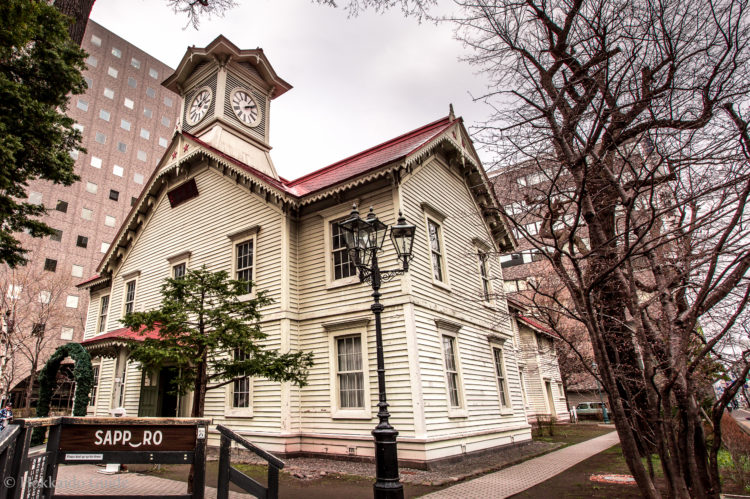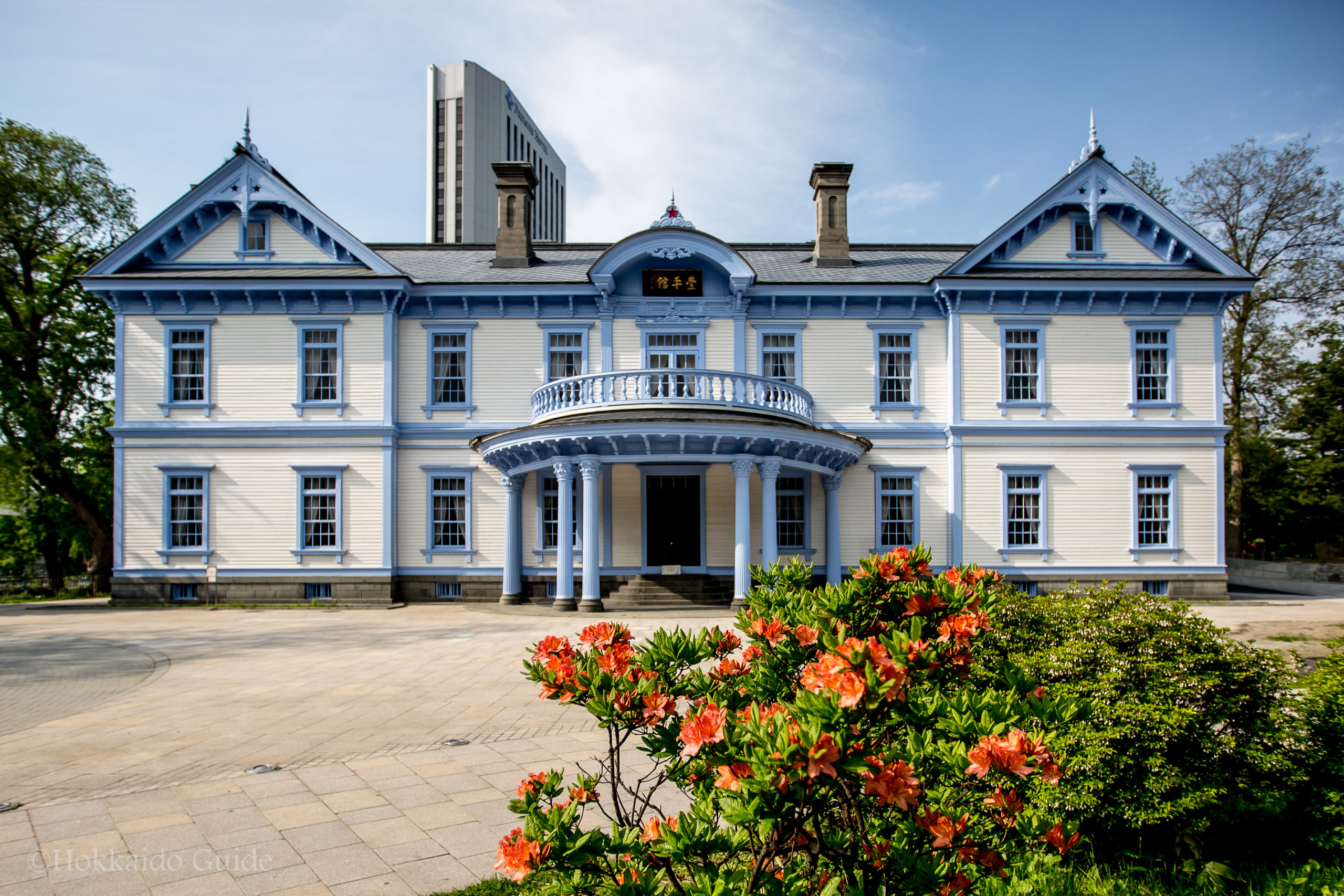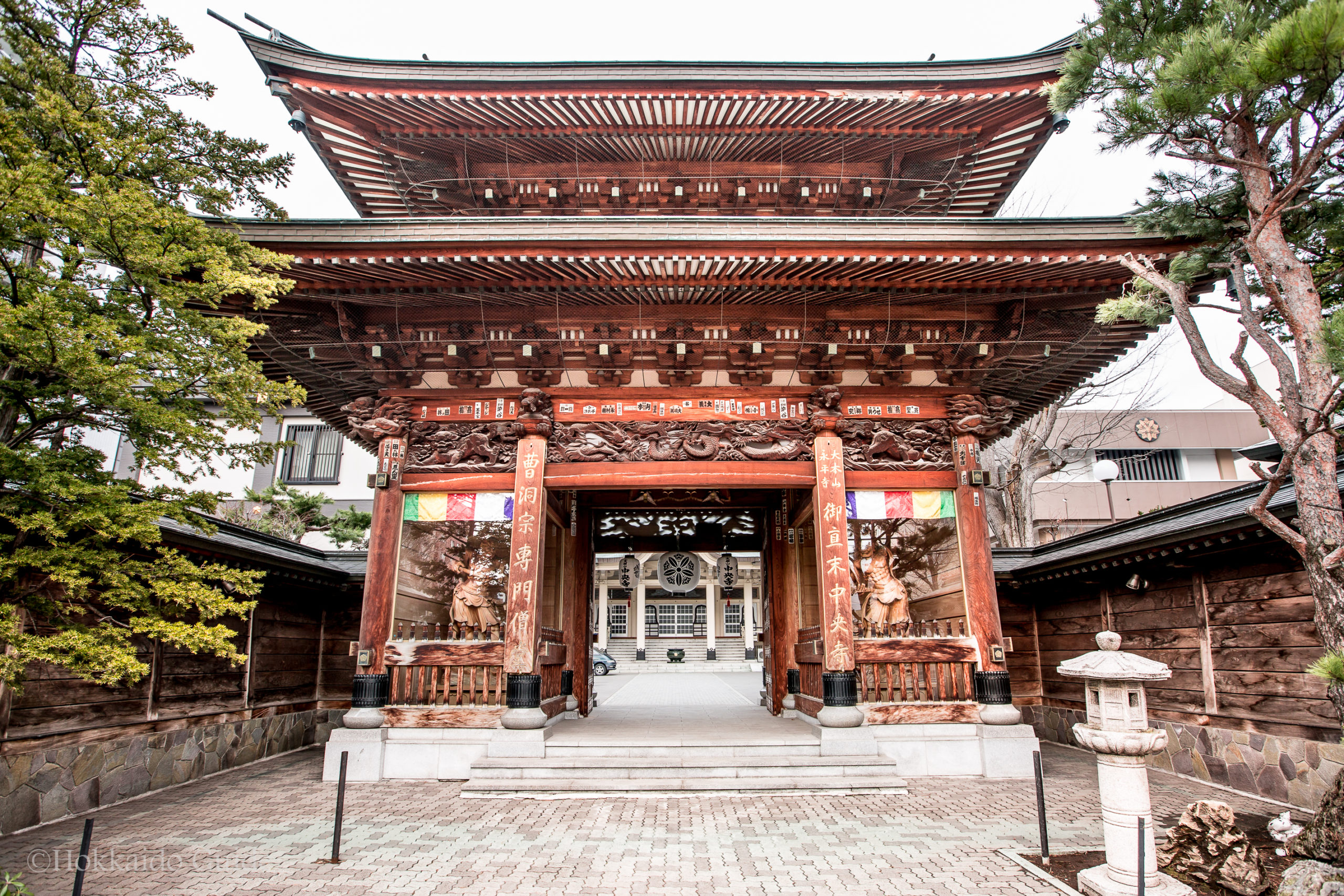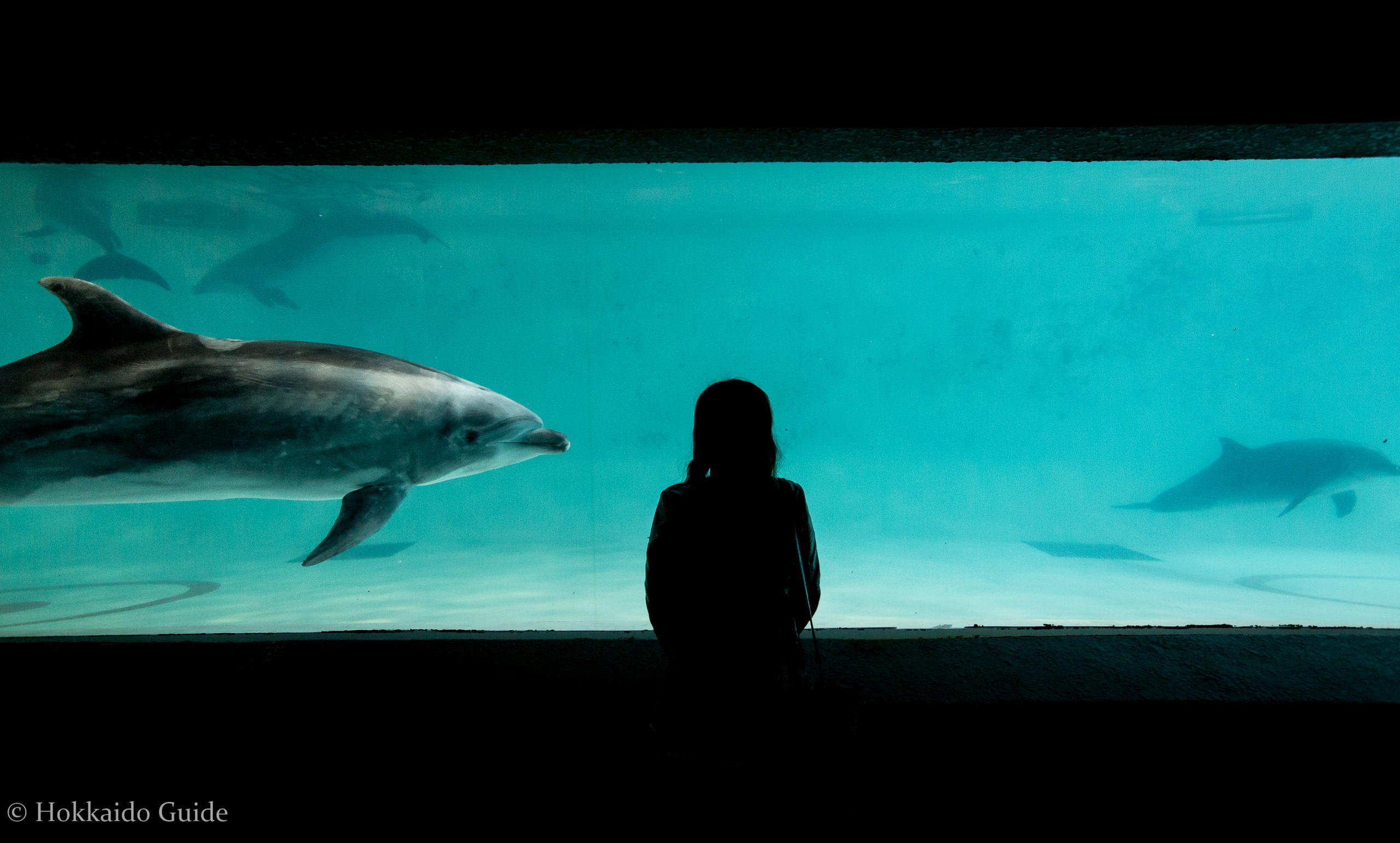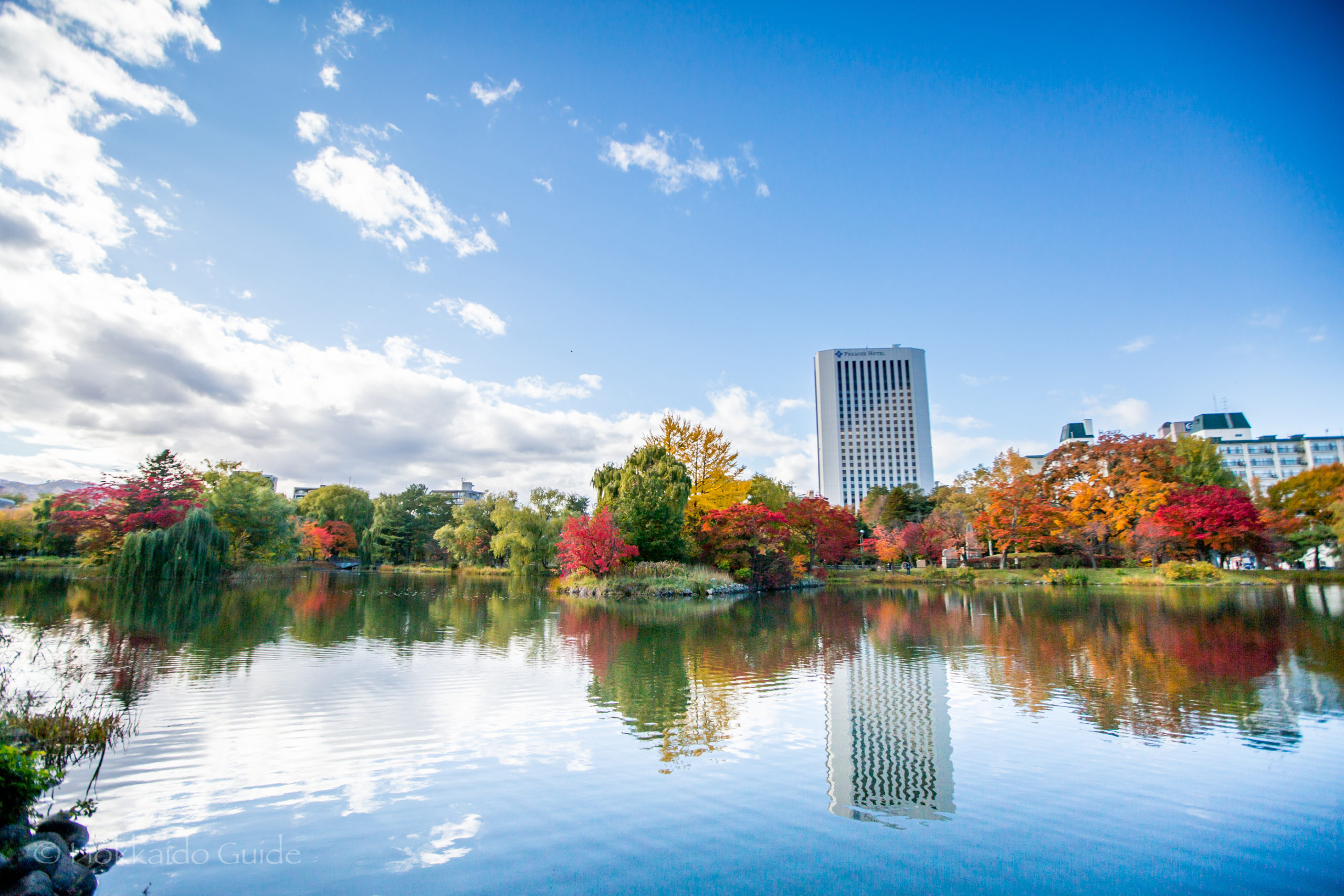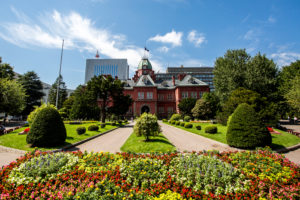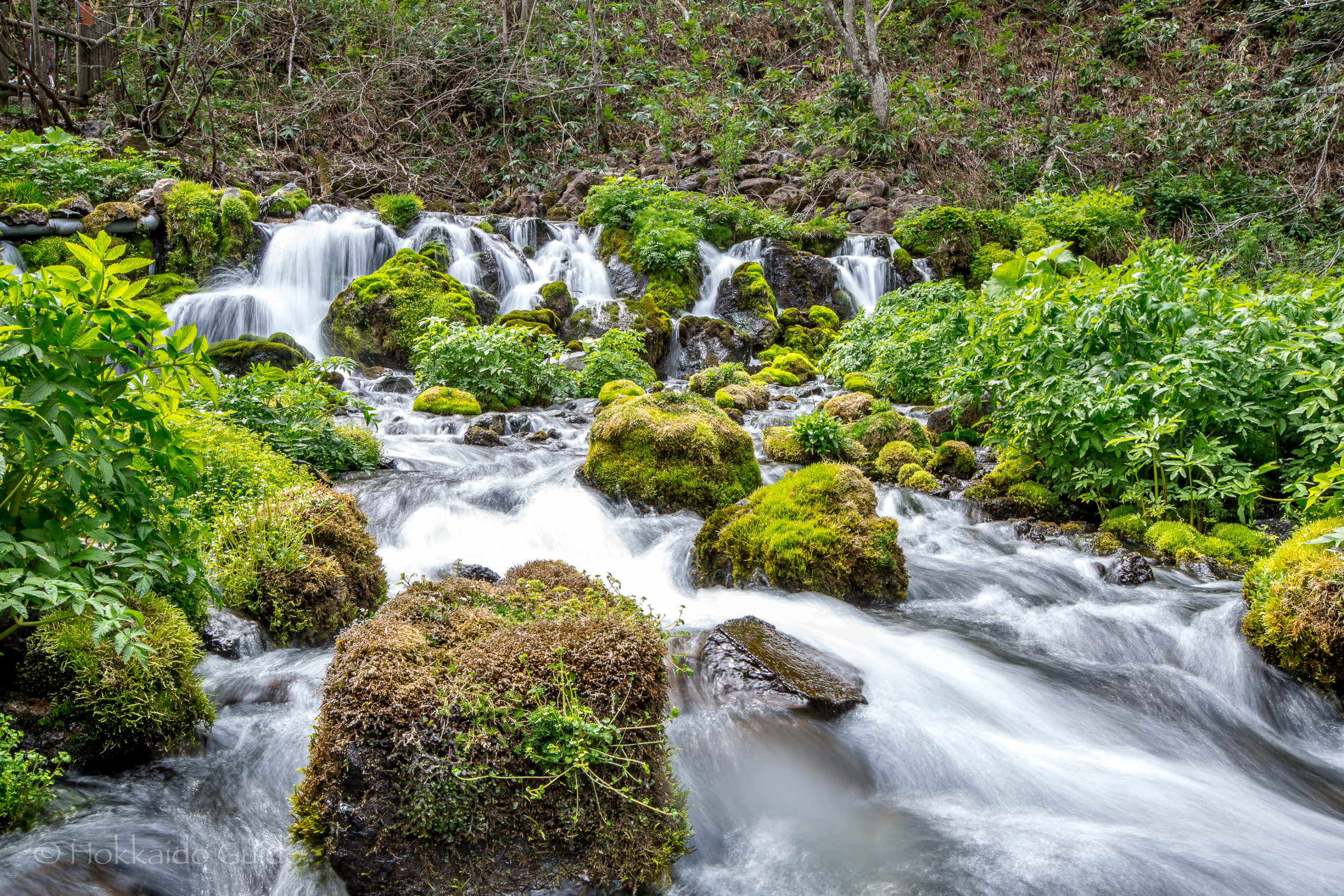
ฮอกไกโดกลาง
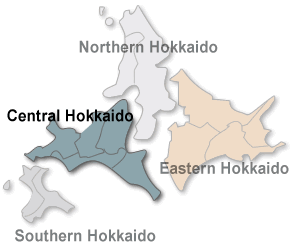 Central Hokkaido is the political and economic hub of this prefecture. The capital of Hokkaido, Sapporo, is located here as well as the port cities of Otaru and Muroran. The major airport of this prefecture is located in Chitose approximately 50 minutes by train from Sapporo. The area has beautiful parks, wildlife areas, ski & snow board mountains and large hot spring (“Onsen” ) areas.
Central Hokkaido is the political and economic hub of this prefecture. The capital of Hokkaido, Sapporo, is located here as well as the port cities of Otaru and Muroran. The major airport of this prefecture is located in Chitose approximately 50 minutes by train from Sapporo. The area has beautiful parks, wildlife areas, ski & snow board mountains and large hot spring (“Onsen” ) areas.
![]() Accommodation
Accommodation
Sapporo –
Clock Tower (Tokedai)
Built in 1878 as a drill hall for the Sapporo Agricultural College, it is a two story American style wooden structure housing a clock. Although now dwarfed by the surrounding buildings it is never the less constantly surrounded by Japanese and other tourists all year round and is the symbol of Sapporo. Renovated in 1998 to house a small museum of local history, it is reported that the Boston made 19th century clock has been so well maintained that it has not only never needed restoration work but also that the clock has never been late in tolling the hour. Top
| Admission | Adults ¥200 |
| Opening Hours | 9:00 to 17:00 Daily |
| Closed | January 1st to January 3rd |
| Contact | 011-231-0838 |
| Notes | - |
| Location / Getting There | Japan, 〒060-0001 Hokkaidō, Sapporo-shi, Chūō-ku, Kita 1 Jōnishi, 2 Chome 札幌市時計台 |
Sapporo –
Hitsujigaoka Observation Hill
 Included in many tourist bus trips this observation area is not the greatest highlight of Sapporo but does offer a nice general view to the city. There is a famous statue of Dr William S. Clark the founder of Hokkaido University and opened in January 2001the Sapporo Snow Festival Information Hall. For those who are thinking of getting married there is also a chapel which is situated in a nice setting near the fields of sheep. Top
Included in many tourist bus trips this observation area is not the greatest highlight of Sapporo but does offer a nice general view to the city. There is a famous statue of Dr William S. Clark the founder of Hokkaido University and opened in January 2001the Sapporo Snow Festival Information Hall. For those who are thinking of getting married there is also a chapel which is situated in a nice setting near the fields of sheep. Top
| Admission | High School and above ¥500 Junior High and under ¥300 |
| Opening Hours | October to May : 9 am to 5 pm daily. June to September : 9 am to 9 pm daily. |
| Closed | - |
| Contact | - |
| Notes | - |
| Location / Getting There | 10 Chome-11-8 Fukuzumi 3 Jō, Toyohira-ku, Sapporo-shi, Hokkaidō 062-0043, Japan |
Sapporo –
Odori Park
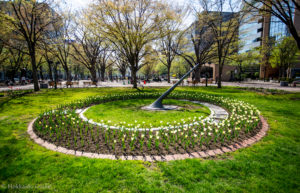
At the centre of the park
| Admission | - |
| Opening Hours | Various events are held throughout the year. |
| Closed | Parts of the park can be closed during construction phases of events. |
| Contact | - |
| Getting There | Odori, Chūō-ku, Sapporo-shi, Hokkaidō 060-0042, Japan Catch the subway to Oodori station. The park runs from the Sapporo TV Tower west for 13 blocks. |
Sapporo –
Hokkaido Old Government Building and the Hokkaido Archives
This red brick neo-baroque western style building was the headquarters of the“Kaitakushi” or the Colonial Development Office. This department was responsible for the development and expansion of the Hokkaido region during the Meji era. Inside the building visitors are allowed to wander freely through almost all parts of the building. In several of the second floor rooms the Hokkaido Archives are housed. This archive consists of various fossils found in the Hokkaido region, tools and artifacts from the native Ainu tribes and various paintings, photographs and historical documents on the development of Hokkaido. Unfortunately there are very few explanations and signs for the exhibits in English but there are folders located that are translated into various languages such as English, Chinese, and Thai. The building is also surrounded by a beautiful garden, which is almost always occupied by various artists. Top
| Admission | Free |
| Opening Hours | 9 am to 5 pm daily |
| Closed | 29th December to 3rd January |
| Contact | 011-204-5019 |
| Notes | - |
| Getting There | 6 Chome-1 Kita 2 Jōnishi, Chūō-ku, Sapporo-shi, Hokkaidō 060-0002, Japan |
Otaru –
Otaru Glassware
 Otaru Glassware is also well known throughout Japan and has had a long history. The glassworks originally made lanterns and other products for the first settlers in the region however, as the town expanded and the herring industry sprang to life the focus was changed to making glass buoys. When the herring industry suffered its major decline in the late 1950s the glassworks began producing ornamental pieces for direct sale to consumers and tourists. Today Otaru’s glass industry is thriving and many beautiful pieces are on display for pleasure and sale. Some major glass works are the Kitaichi Glass works, the Otaru Unga Kogeikan, “The Glass Ship” Warehouse and the Kitaichi Venetian Art Museum. It is possible to “make your own” glass item in some of the glass works such as ‘The Glass Studio’ and the ‘Otaru Unga Kogeikan’. If you wish to make your own item it is best to make a reservation, especially in summer if you have many people in your group. Top
Otaru Glassware is also well known throughout Japan and has had a long history. The glassworks originally made lanterns and other products for the first settlers in the region however, as the town expanded and the herring industry sprang to life the focus was changed to making glass buoys. When the herring industry suffered its major decline in the late 1950s the glassworks began producing ornamental pieces for direct sale to consumers and tourists. Today Otaru’s glass industry is thriving and many beautiful pieces are on display for pleasure and sale. Some major glass works are the Kitaichi Glass works, the Otaru Unga Kogeikan, “The Glass Ship” Warehouse and the Kitaichi Venetian Art Museum. It is possible to “make your own” glass item in some of the glass works such as ‘The Glass Studio’ and the ‘Otaru Unga Kogeikan’. If you wish to make your own item it is best to make a reservation, especially in summer if you have many people in your group. Top
| Admission | Most glassworks are free entry. To make your own glass item prices vary from about ¥500 to ¥2000. |
| Opening Hours | Most shops are open 9 : 30 am to 6 pm (a little later in summer) |
| Closed | - |
| Contact | Kitaichi Glassworks 0134 – 33 – 1993 The Glass Studio 0134 – 33 – 9390 Otaru Unga Kogei-kan 0134 – 29 – 1111 |
| Notes | - |
| Getting There | Most Glassworks are located near the canal area along Ironai dori. From Otaru Station walk toward the bay. About 10 min. |
Muroran –
Dolphin and Whale Watching Tours
 Hokkaido is one of the premier areas in Japan to go whale and dolphin watching. Muroran is well situated to view the whales on their annual migration through Volcano Bay. There are plenty of sightseeing boats available during the the summer months from about the end of April to the middle of August. Top
Hokkaido is one of the premier areas in Japan to go whale and dolphin watching. Muroran is well situated to view the whales on their annual migration through Volcano Bay. There are plenty of sightseeing boats available during the the summer months from about the end of April to the middle of August. Top
| Admission | Tours for adults start at about ¥5000 Tours for minors start at about ¥2500 |
| Opening Hours | - |
| Closed | - |
| Contact | (0143) 27 – 1822 For information & reservations |
| Getting There | - |
Noboribetsu –
Daiichi Takimotokan
 With one of Japan’s largest bath complexes and the oldest hotel in the Noboribetsu area Daiichi Takimotokan is a hot spring lovers delight. Firstestablished in 1858, the complex now has more than half a dozen modern buildings. Contained within these buildings are various mineral pools, waterfalls, walking pools, cold pools, steam room, and a swimming pool with slide. There are seven different kinds of mineral pools and outdoor and indoor pools.Top
With one of Japan’s largest bath complexes and the oldest hotel in the Noboribetsu area Daiichi Takimotokan is a hot spring lovers delight. Firstestablished in 1858, the complex now has more than half a dozen modern buildings. Contained within these buildings are various mineral pools, waterfalls, walking pools, cold pools, steam room, and a swimming pool with slide. There are seven different kinds of mineral pools and outdoor and indoor pools.Top
| Admission | Hotel Guests Free of Charge Non-Hotel Guests – ¥2 000 |
| Opening Hours | Hotel Guests Open 24hrs. Non-Hotel Guests – 9 am to 5 pm Daily |
| Closed | - |
| Contact | 0143 – 84 – 3322 |
| Getting There | - |
Noboribetsu –
Jigokudani (Hell Valley)
 Jigokudani or “Hell Valley”, is a large crater that was formed by Kuttara volcano about 200,000 years ago. It is 450 meters in diameter and is surrounded by red stone cliffs. Hot steam vents and sulfurous streams pour out from the sides of this red valley area giving it a very hell like appearance. This area is one of the major sources for the Noboribetsu hot springs. There are 11 types of springs and water temperatures can reach more than 100°C. The valley also has many hiking trails through it (and a road) and along one of these trails (also possible to drive to) is the sulfurous pond Oyunuma. There are also some smaller even hotter mud pools nearby. Top
Jigokudani or “Hell Valley”, is a large crater that was formed by Kuttara volcano about 200,000 years ago. It is 450 meters in diameter and is surrounded by red stone cliffs. Hot steam vents and sulfurous streams pour out from the sides of this red valley area giving it a very hell like appearance. This area is one of the major sources for the Noboribetsu hot springs. There are 11 types of springs and water temperatures can reach more than 100°C. The valley also has many hiking trails through it (and a road) and along one of these trails (also possible to drive to) is the sulfurous pond Oyunuma. There are also some smaller even hotter mud pools nearby. Top
| Admission | If driving the parking areas for Hell Valley and Oyunuma Marsh cost ¥410. Keep your ticket as one ticket will get you entry to both parking areas. |
| Opening Hours | - |
| Closed | - |
| Contact | - |
| Getting There | Catch the bus from Noboribetsu Station to the hot spring area. Then follow the hiking trails for about 2 min to Hell Valley and about 15 min. to Oyunuma Marsh or 10 min. by car. |
Noboribetsu –
Shiraoi Ainu Museum (Porotokotan)
 The Ainu are the native inhabitants of Hokkaido and there are a few museums in Hokkaido showing some of their lifestyle and goods. The Shiraoi Ainu Museum, also called Porotokotan, exhibits the Ainu culture and lifestyle in an outdoor reproduction of a small Ainu village and also various tools and other goods inside a museum. There are performances of traditional Ainu dances held at various times throughout the day. Top
The Ainu are the native inhabitants of Hokkaido and there are a few museums in Hokkaido showing some of their lifestyle and goods. The Shiraoi Ainu Museum, also called Porotokotan, exhibits the Ainu culture and lifestyle in an outdoor reproduction of a small Ainu village and also various tools and other goods inside a museum. There are performances of traditional Ainu dances held at various times throughout the day. Top
Getting There:
From Noboribetsu, Shiraoi Town is five stations east by local train. A one way journey takes about 30 min. and costs ¥350. N.B. – There is only one train about every one to two hours. The museum is a 10-15 minute walk east from JR Shiraoi Station.
| Admission | - |
| Opening Hours | - |
| Closed | - |
| Contact | - |
| Getting There | - |

